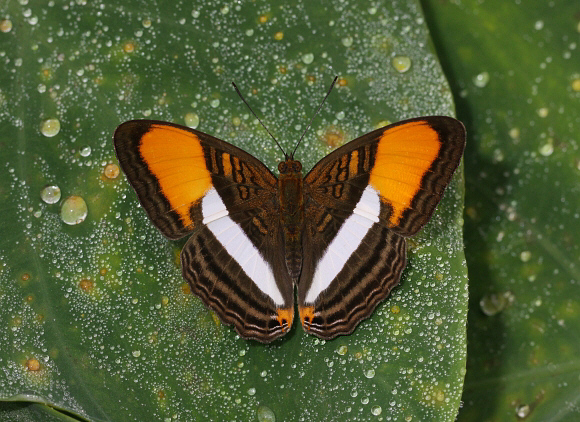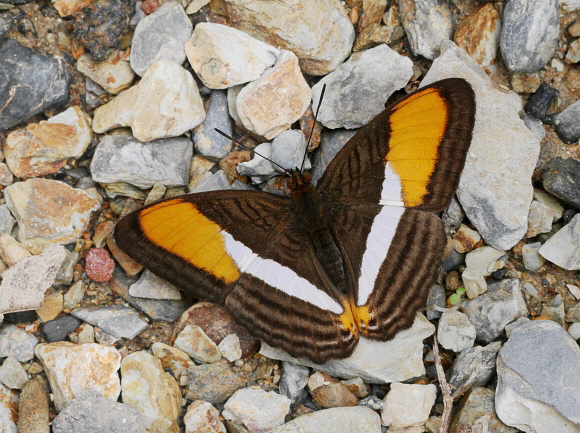
Introduction
Adelpha butterflies are colloquially known as ‘Sisters’. In terms of appearance they are reminiscent of the White Admirals ( Limenitis ) of Eurasia, and share with them a fondness for flitting gracefully around the lower branches of trees in the dappled sunlight of the forest.
There are 85 known species of Adelpha, all except two of which are confined to Central and South America. They are characterised by the distinctive black marbled pattern overlaid on a dark brown ground colour; and by having a broad orange or white band on the forewings. In the vast majority of species this band also extends vertically down to the tornus of the hindwings.
While it is easy to recognise the genus, determining the individual species can sometimes be very difficult – a problem exacerbated by misidentified museum specimens and mislabelled illustrations in many entomological books. The only reliable identification resource is “The genus Adelpha” by Keith Willmott. Accurate identification requires meticulous examination of the configuration of the orange markings in the subapical area on the forewing, and of the precise shape of the vertical bands. It is also essential in most cases to examine the patterning on the underside.
Adelpha cytherea is a very common species, widely distributed throughout tropical and subtropical areas of Central and South America.
Habitats
This is a common species of rainforest and pre-montane cloudforest habitats. It occurs at elevations between 0-1800m along forest edges, in large light gaps, and in secondary forest.
Lifecycle
The egg is white and is laid singly on leaves of Sabicea ( Rubiaceae ). The young larva nibbles away at the tip of a leaf, leaving the midrib projecting. It constructs a chain of frass along the midrib and rests at the end of it. Frass chains appear to act as a deterrent to ants, spiders and parasitoids who find it difficult to walk on them. The fully grown larva is dark brown. It has two rows of conspicuous spines along it’s back, those on the first two segments being enlarged and directed forward, while the third pair are directed backward. It rests openly on the upper surface of old damaged leaves.
Adult behaviour
The butterflies are usually encountered singly or in two’s or three’s. Unlike most other Adelpha species they rarely imbibe moisture from the ground, but will imbibe from damp fallen tree trunks or from the surface of foliage. Both sexes nectar at Cephaelis flowers.

